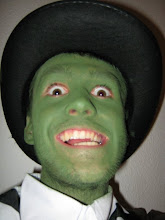Jazz Age
The Jazz Age was a movement that took place during the 1920s or the Roaring Twenties from which jazz music and dance emerged. The movement came about with the introduction of mainstream radio and the end of the war.
Cities like New York and Chicago were cultural centers for jazz, and especially for African American artists. In urban areas, African American jazz was played on the radio more often than in the suburbs.[3] 1920s youth used the influence of jazz to rebel against the traditional culture of previous generations.[4] This youth rebellion of the 1920s went hand-in-hand with fads like bold fashion statements (flappers) and new radio concerts. As jazz flourished, American elites who preferred classical music sought to expand the listenership of their favored genre, hoping that jazz wouldn't become mainstream
Most of New York's Jazz clubs were in Harlem, and in 1925-26, there appeared several popular plays and a book, which portrayed Harlem as the exciting place to be in New York City. As a result, tourists gravitated toward Harlem to see this colorful neighborhood, and the nightlife took off. From 1927 until the late 1930’s, things were so busy in Harlem that good musicians could play every night of the year, sometimes in many different bands, due to constant personnel changes in most of them.
Armstrong received an invitation to go to New York City to play with the Fletcher Henderson Orchestra, the top African-American band of the day. Armstrong switched to the trumpet to blend in better with the other musicians in his section.
Fletcher Henderson
The Fletcher Henderson Orchestra was the most popular African-American band of the 1920s. The smooth, carefully arranged sound ofHenderson's orchestra was a huge influence on the Swing style of the next decade. The Orchestra played at the Club Alabam on West 44th Street in New York.James Fletcher Hamilton Henderson, Jr. (December 18, 1897 – December 29, 1952) was an American pianist, bandleader, arranger and composer, important in the development of big band jazz and swing music. His was one of the most prolific black orchestras and his influence was vast
Cotton club.
The Cotton Club was a famous night club in Harlem, New York City that operated during Prohibition that included jazz music. While the club featured many of the greatest African Americanentertainers of the era, such as Fletcher Henderson, Duke Ellington, Adelaide Hall, Count Basie, Bessie Smith, Cab Calloway, The Nicholas Brothers, Lottie Gee, Ella Fitzgerald, Fats Waller, Louis Armstrong, Dizzy Gillespie, Nat King Cole, Billie Holiday and Ethel Waters
Following World War I, around 500,000 African Americans in search of better employment opportunities moved to the northern part of the United States. With them, they brought their culture and in New York, the start of the Harlem Renaissance. During this period of time, the works of African Americans in fields such as writing and music escalated. Styles of music including Dixieland and blues became popular as well.








No comments:
Post a Comment